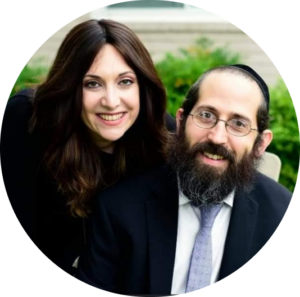Blending Families Is Harder Than It Looks
As a marriage counselor, I’ve worked with countless couples who thought love alone would help their new blended family thrive. But soon after the honeymoon phase fades, they find themselves navigating a maze of parenting differences, loyalty conflicts, and emotional triggers left over from past relationships.
Marriage counseling for blended families isn’t just about the couple—it’s about the entire ecosystem that forms when two homes merge. You’re not only building a new partnership; you’re also helping children, ex-spouses, and extended family members adapt to new dynamics.
This is why the best therapy for blended families goes beyond traditional “couples counseling.” It’s relational, integrative, and rooted in empathy.
Why Traditional Marriage Counseling Often Falls Short
Many couples come to me after trying standard talk therapy. They tell me, “It helped a little, but we still keep having the same fights.” That’s because most traditional therapy models focus on individual insight or conflict management—not on systemic connection.
In a blended family, there are multiple moving parts:
- Biological vs. step-parent roles
- Different parenting styles and expectations
- Emotional baggage from previous relationships
If therapy doesn’t address these relational layers, the deeper healing doesn’t happen.
The Most Effective Approaches for Blended Families
Over the years, I’ve found three approaches especially powerful for blended families:
1. Imago Relationship Therapy (IRT)
Imago therapy focuses on dialogue—creating a safe space where partners can speak and be truly heard. I use it extensively in my 2-Day Marriage Restoration Retreats because it transforms defensiveness into understanding.
Couples learn to:
- Mirror what their partner says (to feel heard)
- Validate their partner’s feelings (to build safety)
- Empathize with their experiences (to rebuild trust)
This approach doesn’t just repair communication; it models emotional intelligence that kids can feel in the home.
In one of my recent intensives, a remarried couple came in feeling defeated. Their teenage daughter refused to speak to her stepdad, and both parents were on edge. By the end of our second day, they’d learned how to listen without defending—and their daughter texted that night saying, ‘I feel like we’re a real family again.“
Try This: Tonight, take 10 minutes to share one small appreciation with your partner about how they’ve helped you blend your family. Keep it specific and heartfelt. Over time, small affirmations rebuild trust faster than big conversations.
2. Family Systems Therapy
This modality looks at the family as a living system. When one relationship changes, it affects everyone. I often weave family systems principles into intensives to help couples recognize patterns and avoid repeating old family dynamics.
3. Attachment-Based Therapy
Blended families often trigger attachment wounds—feelings of rejection, abandonment, or competition. Therapy focused on attachment helps each person (including children) feel secure, seen, and prioritized.
What to Expect in Counseling for Blended Families
The best therapy sessions focus on teamwork, not blame. In practice, this means:
- Joint sessions focused on empathy and communication
- Occasional inclusion of family members for structured dialogues
- Clear agreements around co-parenting and discipline
In my Marriage Restoration Intensives, we often uncover years of unspoken hurt within the first few hours—because the format creates emotional safety fast. That’s what makes intensives so effective: couples get 6 months of progress in just 2 days. I like to start with the parents first- because I’ve found that when the marriage is strong, the family gets stronger.
I often see couples make more progress in one weekend than they thought possible in months of weekly therapy—especially when family patterns are complex.
Signs You Might Need Marriage Counseling
You don’t have to wait for crisis. Some indicators include:
- Frequent disagreements about parenting or discipline
- Feeling like “roommates” instead of partners
- Loyalty struggles between biological and step-family members
- Feeling isolated or unheard in your role as a stepparent
Blending families isn’t about perfection—it’s about patience, presence, and partnership. You don’t have to figure it all out alone. With the right guidance, a blended family can become a healed family.
Key Takeaways
- Blending families is emotionally complex; the right therapy should address both the couple and the system around them.
- Dialogue-based, relational approaches like Imago therapy create breakthroughs faster than traditional talk therapy.
- Marriage intensives can accelerate healing, helping couples rebuild emotional safety and unity in days, not months.
FAQ
1. What’s the difference between couples therapy and family therapy for blended families?
Family therapy includes children or multiple family members, while marriage counseling focuses on strengthening the couple’s bond—the foundation for family peace.
2. Should kids ever join a session?
Sometimes, yes—but only in a structured, safe setting once the couple’s relationship has stabilized.
3. How long does therapy for blended families take?
Every couple is different, but intensives are designed to create major breakthroughs within two days, followed by structured follow-ups for lasting change.






